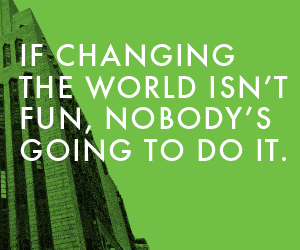The events around Brett Murray’s painting are part of a long history of iconoclasm writes David Freedberg
Censorship and iconoclasm are two of the most powerful expressions of contempt for images. They testify – graphically and eloquently – to the power of the very effects they seek to annul. Throughout history people have sought to suppress, mutilate or destroy images. In some cases the assaults have been political, in others pathological. Often a current of concern about the sensual and sexual power of images underlies the efforts at their elimination or suppression of an image. The recent events surrounding Brett Murray’s The Spear, his satirical portrait of President Jacob Zuma, form part of this long history – though rarely has an effort at official censorship been followed so predictably by an act of iconoclasm.
Based on Viktor Ivanov’s iconic image of Lenin, Brett Murray’s The Spear shows Zuma gazing prophetically to the future. He stretches his arm out towards tWfirst glance it seems authoritative and leaderly enough for the president of South Africa. But then one notices: his trousers are unzipped, and from his open fly hangs a penis.
The painting was put on display on 10 May 2012 in an exhibition at the Goodman Gallery entitled Hail to the Thief II. This title was a clear reference to the widespread perception of corruption in the government and at the highest levels of the ANC. As for the picture itself, there could be little doubt that it alluded to the president’s apparently exuberant sexuality. Painted just before his marriage to his sixth wife, the work surely referred to his well-known history of polygamy, seduction and alleged rape. At his 2006 trial for raping the young HIV-positive daughter of an old ANC comrade of his, Zuma insisted that the sex was consensual and that by showering after sex he had minimised the risk of contracting HIV. In response, the cartoonist Zapiro drew several cartoons showing Zuma with a shower growing out of his head that roused ire in official ANC circles. Now, hearing of the threats to censor Murray’s painting, he produced a cartoon based on The Spear, this time with a shower in place of the penis. But it was the painting itself that aroused the fiercest controversy.
Fallen statue of Lenin next to the Mogosoaia Palace, Bucharest, 2010. Photo: Ferran Cornelià (Wikicommons)
Things moved swiftly. No one could have doubted the satirical intention of the painting. As every South African knew, its title alluded to the military wing of the ANC, Umkhonto we Sizwe (‘Spear of the Nation’). It was bound to be incendiary, and was immediately perceived as such. The ANC reacted by seeking a court injunction to have the picture removed from display at the Goodman Gallery and from the website of City Press. While politicians, political spokespersons and ministers, both of government and religion, insisted that art should not be allowed to insult people with impunity, most artists – of all colours – felt that the ANC’s action went too far. The basis of the lawsuit was that it violated the dignity of the president and his office, as well as the government, the ANC and all Africans. Zuma’s own affidavit claimed that it impugned his dignity “in the eyes of all who see it”. He said that he felt personally offended and violated. Members of the cabinet made public announcements against the painting. The Minister of Public Works declared the picture sadistic, an insult not only to the president but also to millions of South Africans. The leader of one of South African’s largest Baptist churches said that the artist deserved to be stoned to death. He had insulted the entire nation. He did not understand the culture of the majority of South Africans.
Read more in the current issue of Art South Africa magazine (11.1), in stores now.
David Freedberg
ORIGINALLY PUBLISHED IN ART SOUTH AFRICA V11.1



